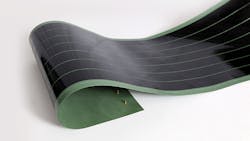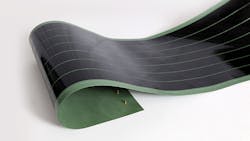Nanotubes Keep Drone Wings Ice-Free
Engineers at Battelle Memorial Institute, Columbus, Ohio, have tested their HeatCoat, a device for keeping ice off the wings and control surfaces of drones. It consists of a carbon-nanotube coating that can be sprayed on or applied in flexible sheets. Sending electricity through the panel or coated area generates enough heat to prevent ice from forming and break free any ice that has formed. A controller monitors weather conditions and heater performance, ensuring power is only used when needed.
In a four-day test of the new anti-icing/de-icing device inside a wind tunnel designed to recreate icing conditions, the HeatCoat was attached to an airfoil and exposed to wind speeds up to 182 knots, temperatures down to -22°F, and water sprays. The HeatCoat was able to prevent ice from forming (anti-icing), as well as remove ice that was allowed to form (de-icing).
The HeatCoat method is lighter, simpler, and more efficient than conventional anti-icing/de-icing techniques. These include bleed (heating the wing with hot engine air), pneumatic boots (inflatable rubber forms that break ice from airfoil surfaces when inflated), and weeping wings (releasing toxic antifreeze fluid from nozzles in the wing and coating the wing surface with the liquid). These methods can draw too much power and are too heavy for most drones.

